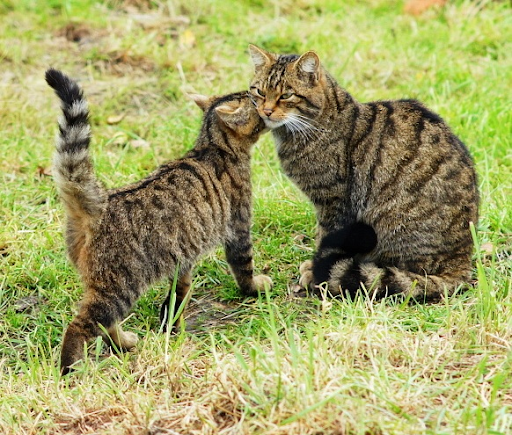Content Note: This piece contains mentions of r*pe and sexual assault pertaining to aspects of consensual non consent fantasy and play.
Let’s first reiterate a bit of what was discussed in part one of this article series, in that consensual non-consent is NOT the same as r*pe and kidnap play. These are merely a few particular scenarios that involve consensual non-consent (abbreviated as CNC) and don’t make up for a bulk of how CNC is practiced. CNC demonstrates itself in a wide variety of ways and applications.
Below we will detail some ways to perhaps more safely navigate kidnap scenarios and or scenarios of BDSM play that may mimic sexual assault. We will veer a bit away from centering brat experience in these sections, though certainly a brat or bratting could be involved in these types of play.
CNC And Considerations Of Trauma
It would be my recommendation that for engaging in CNC that qualifies as r*pe and or kidnapping play, or play that mimics sexual assault, you only engage in these types of play with scene partners that you have established a great deal of trust with through a certain amount of previous play or other forms of relationship building. For those of us who have experienced actual sexual assault, this can be an especially precarious space to inhabit, with potential for further harm, traumatization or activation of certain triggers. It may also require a very specific type of care (before, during, and after) as well as a great deal of space being made to opt out of the play at any given moment. Safewords are always an essential part of BDSM practice but should be given particular consideration for these types of play, even if you don’t have previous experience of being sexually assaulted.
CNC and Aftercare
The aftercare for these types of scenarios may also look different than other types of aftercare someone prefers to receive. There are times in which the submissive/receiver of the act may not want to be touched or physically comforted directly after the experience. They may recoil, cry, experience irregular breathing, require some physical space, and or other support that more aligns with the support needed for moments of more intense trauma activation (EFT tapping, breathing exercises, appropriate lines of questioning that will likely feel supportive, etc).
If you are engaging in this type of play and you don’t have a knowledge base around trauma or activation, I feel some development of knowledge in these areas would profoundly aid in a capacity to more safely engage in these types of CNC scenarios. It is important to remember that everyone experiences these things in unique ways and will want different types of support. Additionally, things will feel and be received differently on every distinct occasion. This is why frequent and recurring conversations about detailed support and aftercare are so vital and why it is so important to leave space for individual experience.
A Few Common Misunderstandings
There seems to be a few commonly misunderstood aspects of CNC in relation to sexual assault.
It’s kind of an all or nothing conception of CNC when it’s involved in play that mimics kidnapping or r*pe. What I mean by this is that there exists a conception of people who may have experienced sexual assault that they will either have no interest in this type of play, avoiding it at all costs, for fear of retraumatization, or in the other hand that the only reason someone might engage in this type of kink is to create a controlled environment in attempt to heal from trauma they incurred as a result of an assault.
These things may SOMETIMES be accurate and applicable but this conception fails to take into account the nuances of existence as well as the innumerable reasons people engage in this type of consensual non-consent play.
Kink isn’t always about creating containers for healing and it doesn’t need to be in order for it to be valuable in our lives. Play can be valuable purely as an act of fun and or experience. Joy and pleasure have profound effects on our lives.
There may also be times we don’t totally understand our desires for exploring certain actions. That’s perfectly acceptable. And as someone who has experienced various instances of assault, who does occasionally engage in CNC ways that mimic sexual assault, I’m an example of somone that negates this conception that we all will want or need to avoid situations like this for fear of being triggered or retraumatized.
Consent Considerations On All Sides Of A CNC Interaction
Aftercare for Dom/me/mxs
Another important part of CNC aftercare (all aftercare really) that I find is often left out of these conversations is how a dom/me/mx or the person taking on the role of aggressor may be affected and what type of support they will need or desire before, during, and after the play. Let’s remember these are instances of play and pretend and it may sometimes take quite a toll, emotional/physical/psychological/spiritual, for someone to inhabit a role on the “violator” side of CNC play. Special considerations and discussion in advance of the act should be made for the person who is pretending to enjoy or enact an scenario of mock assault or an act that mimics a violation of consent for another person.
Windows of Time
Another helpful way to facilitate something like a kidnapping scenario or a type of play mimicing sexual assault, is to establish a consensually predetermined window of time for the play to happen. This will leave room for some element of surprise, which may be a desired element, but also supports space for it to happen without undesirable side-effects like friends worrying about someone going missing for a day or missing work, etc.
Establish Strong Connections Before Play
I will reiterate that it is my recommendation that you only engage in these types of CNC scenarios with people you know very well and have developed foundations to support informed consent and more abundance of safety. Perhaps however, engaging in this scenario with a stranger or someone you don’t know well may be the thing that feels most erotic or exciting to you. To do this comes with an increased potential for harm but it doesn’t mean you can’t take measures to build in more consideration of safety.
To more safely mitigate the potential for harm and still have this personal dynamic present, you may want to seek out a professional whose services you could contract to that end. The same detailed discussions before engaging in the play, around safewords, expectations, support, and aftercare should still be an important and ever present process – regardless of the capacity by which you know your play partner.
CNC & Fantasy
The final thing I would like to emphasize is that consensual non-consent is a form of play and pretend where all participants are agreeing upon a way to move forward. This may seem obvious but far too often I see people projecting derogatory judgements and conflating certain BDSM practices as having a direct correlation to experiences of which they may be stylistically evocative.
For example, a couple who are inhabiting a teacher/student role play scenario where the teacher character is punishing the student and taking sexual advantage of them does not have a direct correlation to actual abuse. Nor does it mean there is an underlying desire present to engage in abuse that may occur between an actual teacher and an underage student.
BDSM Pet play has no connection or relation to a sexualization of non-human animals like dogs, cats, horses, etc.
Age-play or an AB/DL lifestyle has no connection to a sexualization of children or an inclination towards pedophilia.
And consensual non-consent has no connection or association for a desire to actually violate someone’s consent or a desire to engage in sexual assault.
If you find yourself having judgemental thoughts around any of these things I would invite you to check in with yourself and explore the potential origin of these thoughts rather than project them onto other people. These examples of play are all ways for consenting adults to engage in a form of pretend in order to explore the complexities of desire and eroticism that live within our ever-changing bodies.
Power In Play
BDSM and kink are ways to explore power dynamics in consensual ways that may feel liberating and pleasurable. In a world where many of us are non-consenting victims to abuse of power within harmful power dynamics, perhaps exacerbated depending on intersectional positioning on an axis of identity, the areas where we can consensually play with power exchange are territories rich with potential rewards.

Kitty Pride (she/her) is a Gender and Sexuality educator and author based out of the Southwestern United States.

